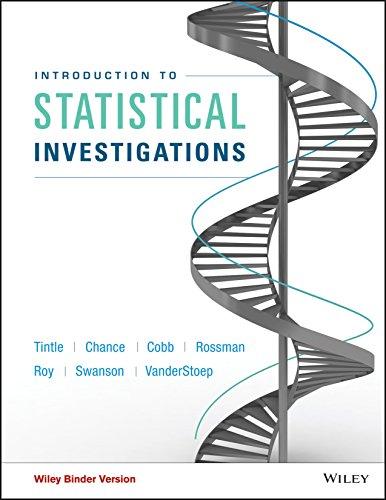Reconsider the previous exercise on the Stroop effect. a. There was one point in the scatterplot that
Question:
Reconsider the previous exercise on the Stroop effect.
a. There was one point in the scatterplot that was a clear outlier. One of the researcher’s great aunt, who was 87 years old, took 100.60 seconds to complete the task. This was almost three times as long as the next longest time. Remove that point from the data set and find a new p-value. Are your results significant?
b. After the great aunt’s point is removed from the scatterplot, there now appears to be a couple of other points, representing an 8-year-old and a 10-year-old, that might be outliers. Perhaps an association between age and time won’t be demonstrated when the subjects are too young. For this reason, delete all the points representing anyone 10 and under. There should be five of these. Find a new p-value. Are your results significant?
c. With the 87-year-old included, there is a significant association. When the result from the 87-year-old is deleted from the data, there is not a significant association. When results from everyone 10 and under are deleted from the study, there is a significant association. So, how would you answer the question, is there an association between age and the time needed to complete this task of reading of color names? Explain.
Step by Step Answer:

Introduction To Statistical Investigations
ISBN: 9781118172148
1st Edition
Authors: Beth L.Chance, George W.Cobb, Allan J.Rossman Nathan Tintle, Todd Swanson Soma Roy





